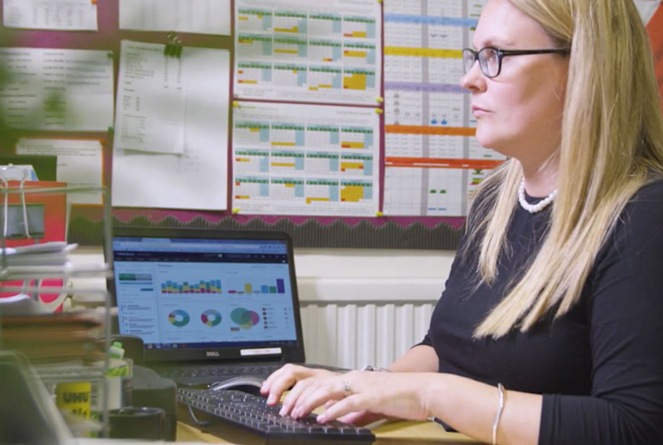Introduction
Budgeting for a school or academy can be daunting, but a structured approach can make it manageable and even empowering. Whether you're a seasoned administrator or a novice delving into the world of education finances, following a systematic method can lead to better decision-making and resource allocation.
Kim Cannon, one of Juniper’s education finance experts, knows only too well the intricacies of the school/academy budgeting process. In this blog, Kim has put together a step-by-step guide on approaching the budget effectively based on tried-and-tested principles and explores other things to consider besides numbers.
Kim also shares her top tip when it comes to preparing the budget, which is this:
“Always start with what you know, then use historical data to make informed estimates.”
9 things to consider with school budgeting
1. Prepare grant income
Schools Block / GAG;
SEN funding
Pupil Premium grant
Estimate other grants such as Primary PE Grant / UIFSM / Nursery funding
Post 16 funding
Original Teachers pay/pension grant (where applicable)
Special schools – new combined TPAG/TPECG/CSBG
2. Prepare trading accounts for all traded activities
Use business plans to calculate break-even point or clearly show profit/loss and present findings to headteacher/CFO (MATs) /governing body for consideration of any necessary price changes.
Catering; Breakfast/After school clubs; Nursery – remember changes to Early Years funded entitlement may increase demand for places.
3. Estimate other income - Lettings; Uniform; Swimming etc.
Trips – use a profit/loss sheet to ensure all costs are covered in price advised to parents/carers.
4. Calculate staff costs
Use current staff level as a base data version. Meet with the headteacher/CEO (MATs) to discuss any changes to staff contracts, that way you can calculate the different scenarios and advise on the changes to costs.
5. Estimate known expenditure
Annual contracts/subscriptions; Utilities (Fuel, Water, telephones/broadband); Insurances.
Use historic data and add an inflationary percentage.
6. Refer to the School Development Plan - include items previously listed, check with the headteacher/CEO (MATs) for any updates.
7. Refer to Asset Management Plan/Survey – include items listed as necessary repairs for the year.
8. Curriculum resources - use a bid led process
Budget holders/subject leaders look at what new resources they need to effectively deliver the curriculum and submit a list to the headteacher/CFO (MATs), who then review and prioritise the budget allocation according to the SDP, pupil attainment levels and latest OFSTED reports.
9. Capital – DFC grant
Consider how this will be used and whether any revenue contribution will be needed towards capital projects. If you have any Additional Schools Capital Funding 22/23 (Energy Efficiency Grant) left, remember this must be spent by 31st March 2025.
Collaboration is the key to good budgeting with all parties communicating and working together – Headteacher + Governors/trustees + CFO(MATs) + finance staff.
Beyond the numbers: Other key factors in setting school budgets
Strategic planning
Effective budgeting is not just about crunching numbers; it's also about strategic planning. Schools should align their budgeting process with their long-term goals and objectives to ensure financial resources are allocated in ways that support the school's mission and vision. By incorporating strategic planning principles into budgeting, schools can prioritise investments that contribute to academic excellence, student success, and overall institutional growth.
Equity and inclusion
In budgeting, equity and inclusion must be considered to ensure that resources are distributed fairly and that all students have access to quality education. Schools should analyse budget allocations through an equity lens, identifying areas where additional support may be needed to address disparities in student outcomes. By prioritising equity in budget decisions, schools can create a more inclusive learning environment where every student has the opportunity to thrive.
Technology
Technology can play a vital role in streamlining the budgeting process and improving financial management practices. Schools can leverage budgeting software and financial management tools to automate repetitive tasks, track expenses in real time, and generate accurate financial reports. Additionally, technology solutions can facilitate collaboration among stakeholders, enabling more transparent and efficient budget discussions.
Conclusion
As schools navigate the complexities of budgeting, embracing a holistic approach that encompasses both financial and non-financial considerations is essential for laying the groundwork for a thriving learning environment where every student can flourish.
The education partner you can count on
With over 30 years of expertise in education finance, Juniper's dedicated team of consultants are ready to assist schools/academies in managing their budgets effectively.
Alternatively, feel free to contact our team for comprehensive support with all your financial needs.


/Primary%20school%20.jpg?width=2000&name=Primary%20school%20.jpg)








.png?width=940&height=788&name=Lingfield%20College%20Case%20Study%20(5).png)
-1.png?width=1000&height=833&name=National%20Association%20of%20Head%20Teachers%20(3)-1.png)
-3.png?width=1080&height=1080&name=Untitled%20design%20(10)-3.png)







